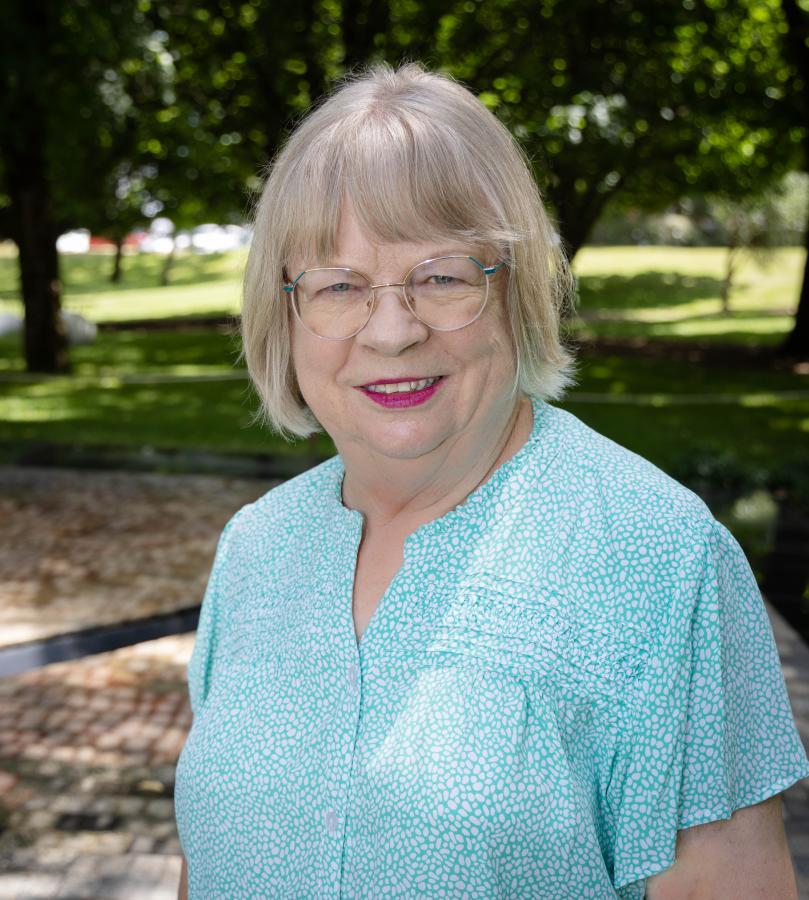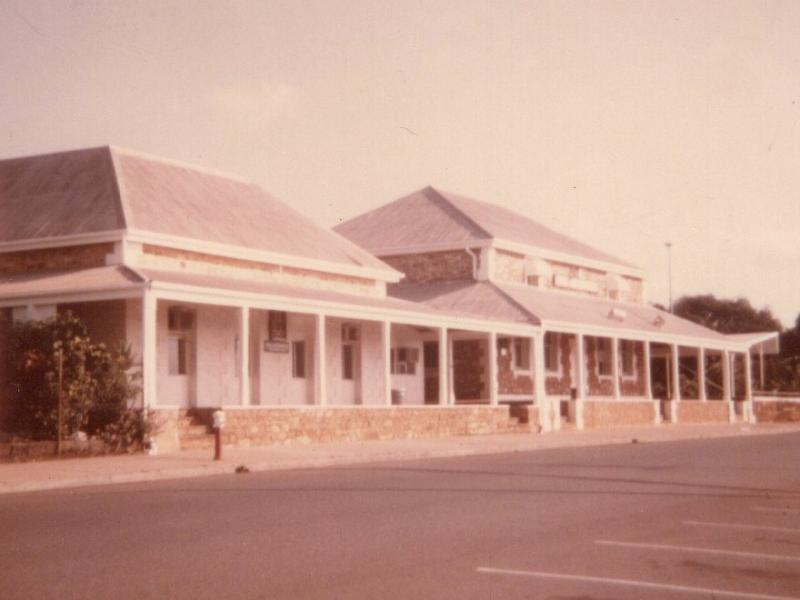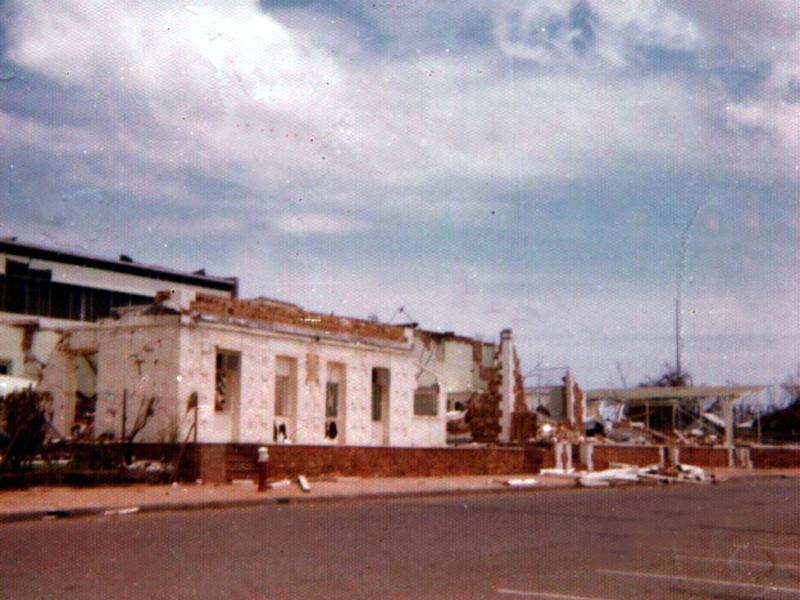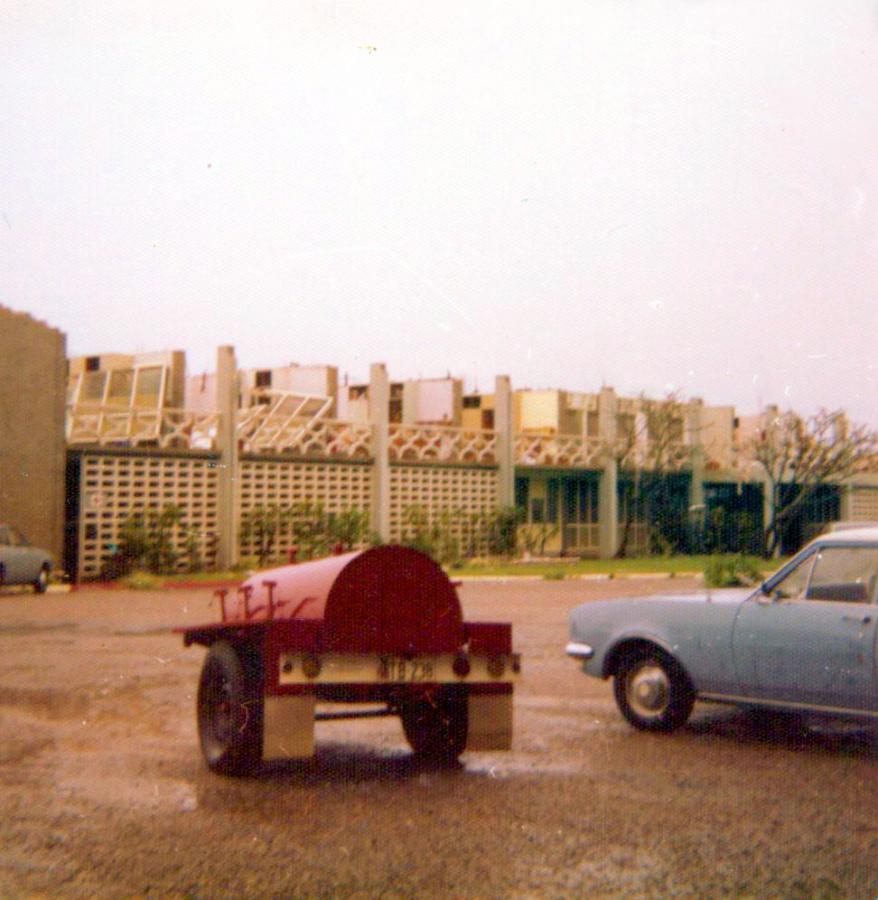Retired WRAN remembers Cyclone Tracy, 50 years on

Judith Rowe at the Australian War Memorial, 2024. Photographer: Kris Kerehona
Fifty years ago, on Christmas Day 1974, Judith Rowe stood in shock, staring at the collapsed building where she had sought shelter. The roof was gone, the structure reduced to rubble. Cyclone Tracy had unleashed its catastrophic force on Darwin, leaving the city in ruins and a nation in shock.
Now a volunteer working at the Australian War Memorial, at the time, Judith was a 21-year-old Leading Wran Radio Operator Special with the Women’s Royal Australian Navy Service (WRANS), stationed at HMAS Coonawarra.
“The cyclone itself was pretty horrendous,” Judith recalled.
“We weren’t too sure what was happening because it was on Christmas Eve.
“We’d had a cyclone alert the week before and nothing happened, so when we got the alert on Christmas Eve people said ‘Oh no it’s just another false alarm’ and kept on partying until things started to get a bit serious.”

Cyclone Damage, Parer Drive, c1974. Northern Territory Library Northern Territory Government Photographer Collection PH0095/0101
Born and raised in Mackay, Queensland, Judith joined the WRANS at the age of 18, inspired by her family’s history of military service. Her father had served in the Royal Australian Air Force during the Second World War; her grandfather had served in the Australian Imperial Force during the First World War.
“The reason I chose the navy was that I had been in the Sea Rangers … they were part of the Girl Guides,” Judith explained.
“I really enjoyed learning about navigation and tying knots and rowing and all sorts of nautical stuff and I thought, the navy sounds good.”

WRANS Class, May 1971. Judith is back row, third from right. Courtesy: The Royal Australian Navy Communications Branch Association
After recruit training, Judith attended the Royal Australian Navy Communications School, where she learned Morse code, typing, and basic communications. In 1973, she was posted to HMAS Coonawarra in Darwin, focusing on wireless telegraphy and signals intelligence.
Judith was one of a few hundred navy personnel in Darwin when Cyclone Tracy hit on 24 December 1974.

Portrait of Judith Rowe in the WRANS 1974. (Supplied: Judith Rowe)
Storm begins
When the cyclone warnings were issued, Judith was working at the Christmas Eve dance.
“At about half past ten, cyclone warnings were issued,” she recalled.
“When the rain and the wind started to get worse, everyone was sent home early.”
Along with other Wrans, Judith sought shelter in an old recreation room, which they believed would be safe.
“The wind was so loud … just blowing really hard and [there was] thunder and lightning and what have you, heavy rain.
“But you could hear noises, glass smashing, and breaking.”
Around midnight women and children arrived, desperate for shelter after their homes on the naval base had collapsed.
“We [moved] to the sick bay which was in the same building but we had to go outside in pairs and carry the children because the winds were so strong.”
At around 3 am on Christmas Day, navy personnel came to move them all to the main mess deck where the other families had congregated.
"We walked out of the building and we looked back – at the building we’d been in – and the roof had been lifted off and all the top floor had collapsed,” Judith said.
“That was a real shock.
“It was just utter destruction everywhere.”
Eye of the storm
Cyclone Tracy remains one of the worst natural disasters to hit Australia.
The storm was initially expected to pass around Darwin and, as such posed no serious threat. However, by early morning on Christmas Eve the cyclone shifted course towards Darwin - the sky turned dark and menacing, with torrential rain and wind speeds over 200 km/h. Wind speed was last recorded at 217 km/h at 3.10 am when the anemometer (a device that measures wind speed and direction) was destroyed.
At 3.30 am, the eye of the cyclone passed over Darwin.
“It was dead calm for half an hour and then the winds started again in the opposite direction,” Judith said.
By 8.30 am, the rain finally eased, revealing the extent of the devastation. In less than 12 hours, the stage four tropical cyclone had destroyed 80 per cent of the city, killing 66 people, including two sailors, and injuring hundreds. Nearly all telecommunications and radio equipment were wiped out, including those at HMAS Coonawarra and HMAS Melville, delaying news of the devastation from reaching wider Australia.
“One of the hardest things was trying to get word out to our families that we were alive.”
Judith’s parents didn’t learn she had survived until two days later, after a call from navy authorities in Brisbane. By Friday, telephone lines were restored, allowing Judith to call her family.
RAN Headquarters personnel during aftermath of Cyclone Tracy which devastated Darwin on 24 December 1974. Leading Seaman Stephen Drake drives the tractor.
Aftermath
In the wake of the disaster, Judith joined other Wrans in the clean-up effort. Roads were littered with shattered glass, tin and nails, puncturing tyres and slowing progress.
Judith reflected on a close call: she was supposed to be house sitting for some friends that night, but the approaching storm kept her on the base.
“Christmas Eve was supposed to be my first night sleeping there but I couldn’t get out there because the cyclone was coming.”
When Judith was able to return, the house had been destroyed.
“If I was there, who knows what might have happened.
“As I wandered around, I found the Christmas cake my mother had made.”
The RAN provided swift emergency response with Operation Navy Help, sending 11 RAN aircraft, 13 ships and some 3,000 personnel from around the country to help with the clean-up.
Judith continued to serve in the RAN until 2001 and continues to stay connected to the WRAN community, serving on the committee of the ACT Association.
Fifty years later, the events of Cyclone Tracy still resonate deeply with those who saw it first-hand.
In January 1975, Judith was granted leave to visit her family back in Mackay. The view from the plane has left a lasting impression.
“When the aeroplane took off from the airport you could look down onto the devastated town and see how widespread the devastation was.
“I’d been there for weeks, amongst this devastation – driving around and seeing it from the ground.
“But I didn’t realise or appreciate the extent of it until I saw it from the air.”





